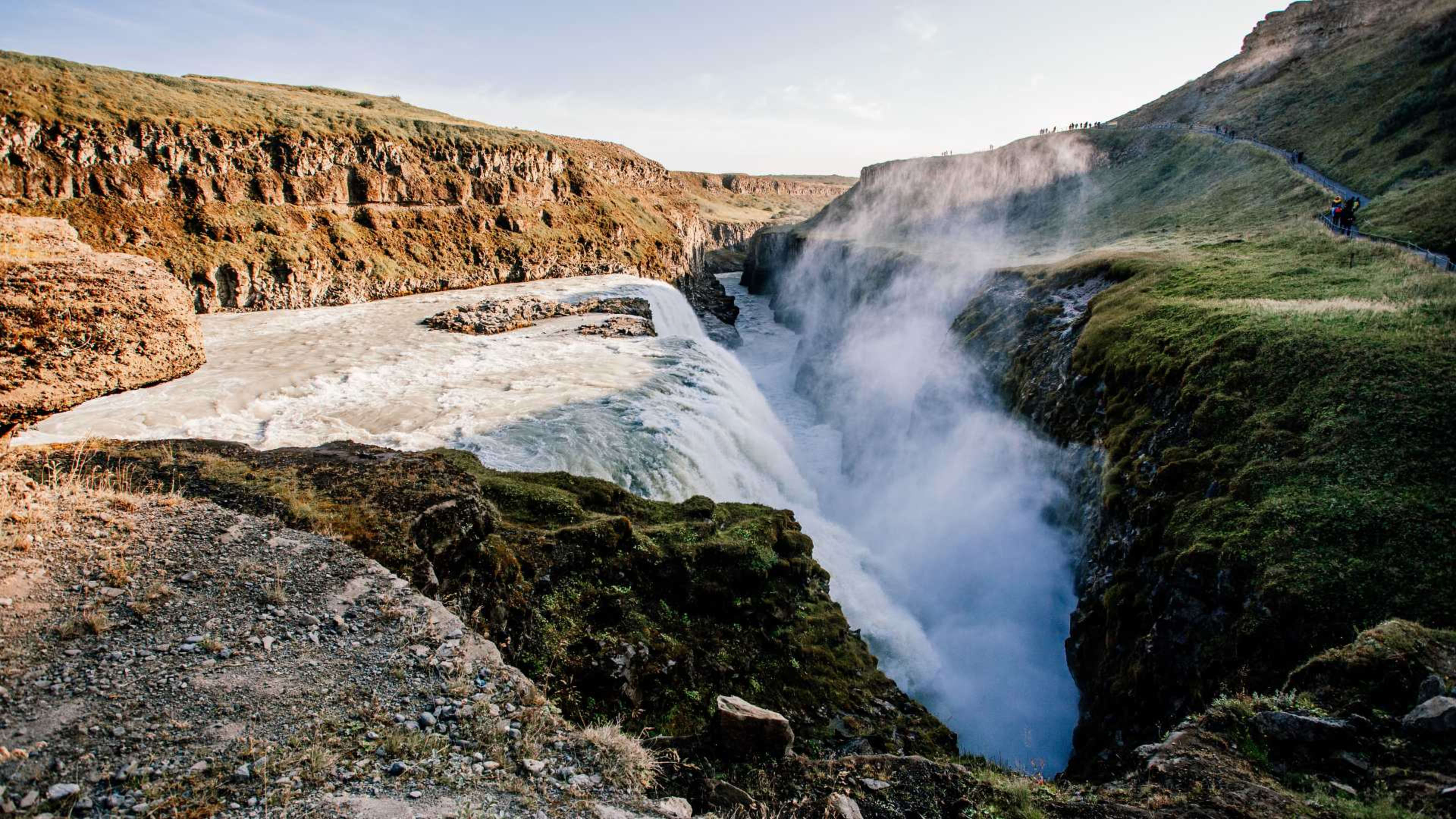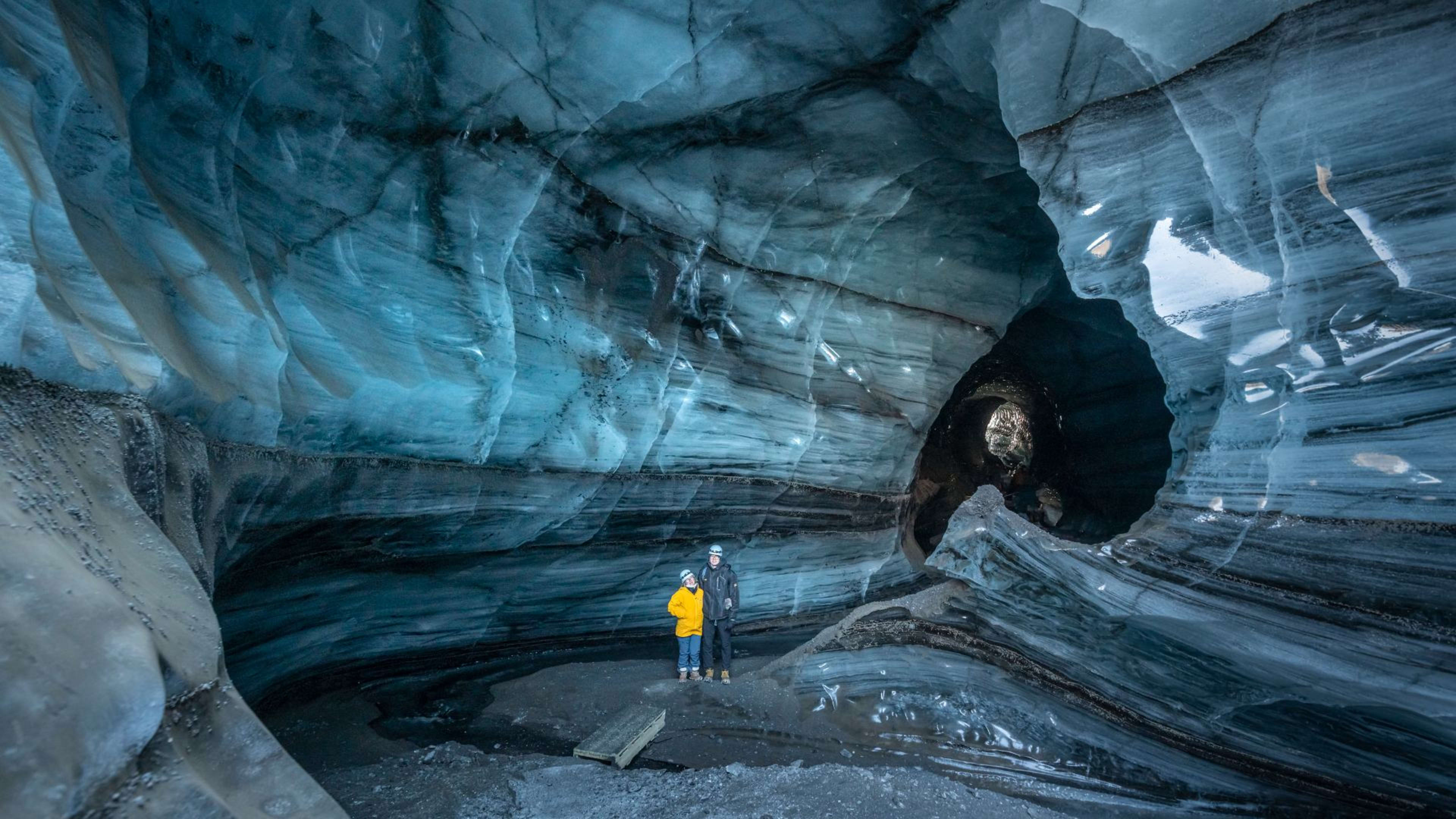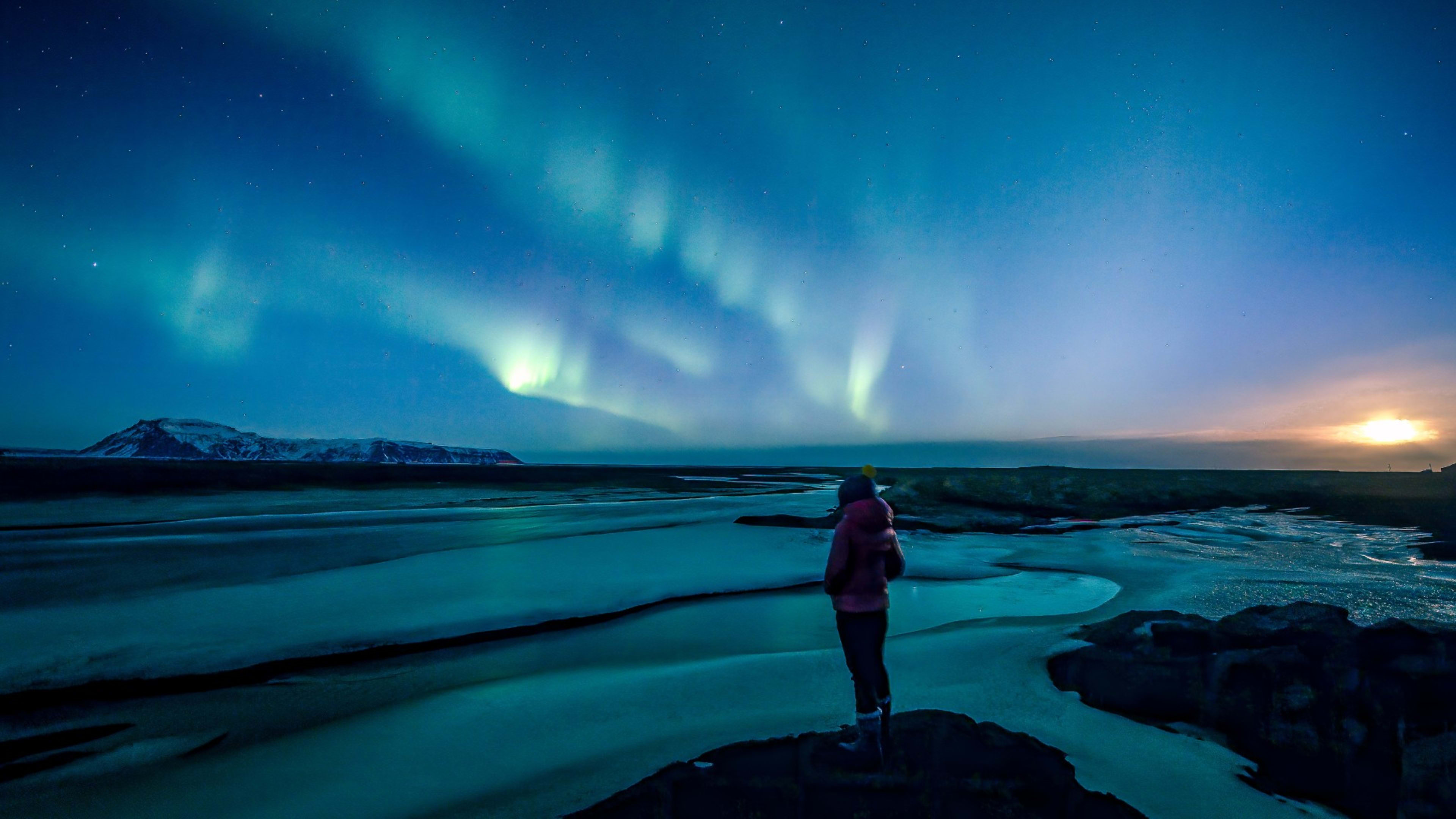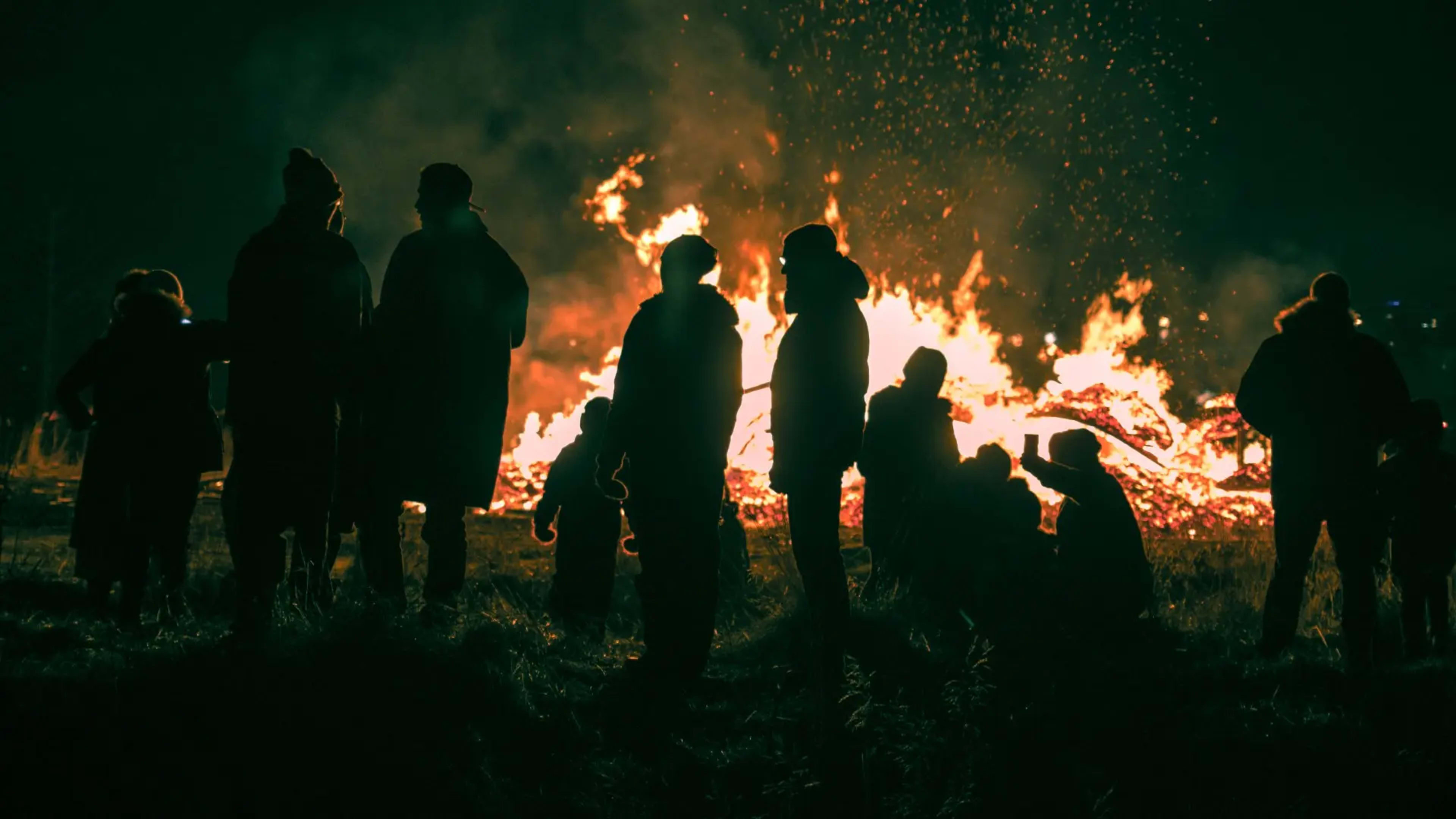Reykjavík, Iceland’s capital, is a buzzing cultural hub. Here you can spend the day flitting between cool cafés, modern art galleries, and fascinating museums. In fact, museums are a great way to learn about Iceland’s cultural and natural history. But what are the best museums in Reykjavík?
Below we’ve rounded up some Reykjavík museums that we think you’ll love. If history’s your thing, delve into the country’s past at the National Museum of Iceland or learn about Viking pioneers at the Settlement Exhibition.
If nature’s more your vibe, visit Whales of Iceland at Perlan or Aurora Reykjavík. And for modern culture, there are art museums and countless galleries.
- Soak up Icelandic culture on one of these multi-day tours from Reykjavík.
So whilst the question of which museum in Reykjavík is best depends on your own interests, you’re bound to find one that interests you. Let’s dive in!
Top 10 museums in Reykjavík
1. National Museum of Iceland
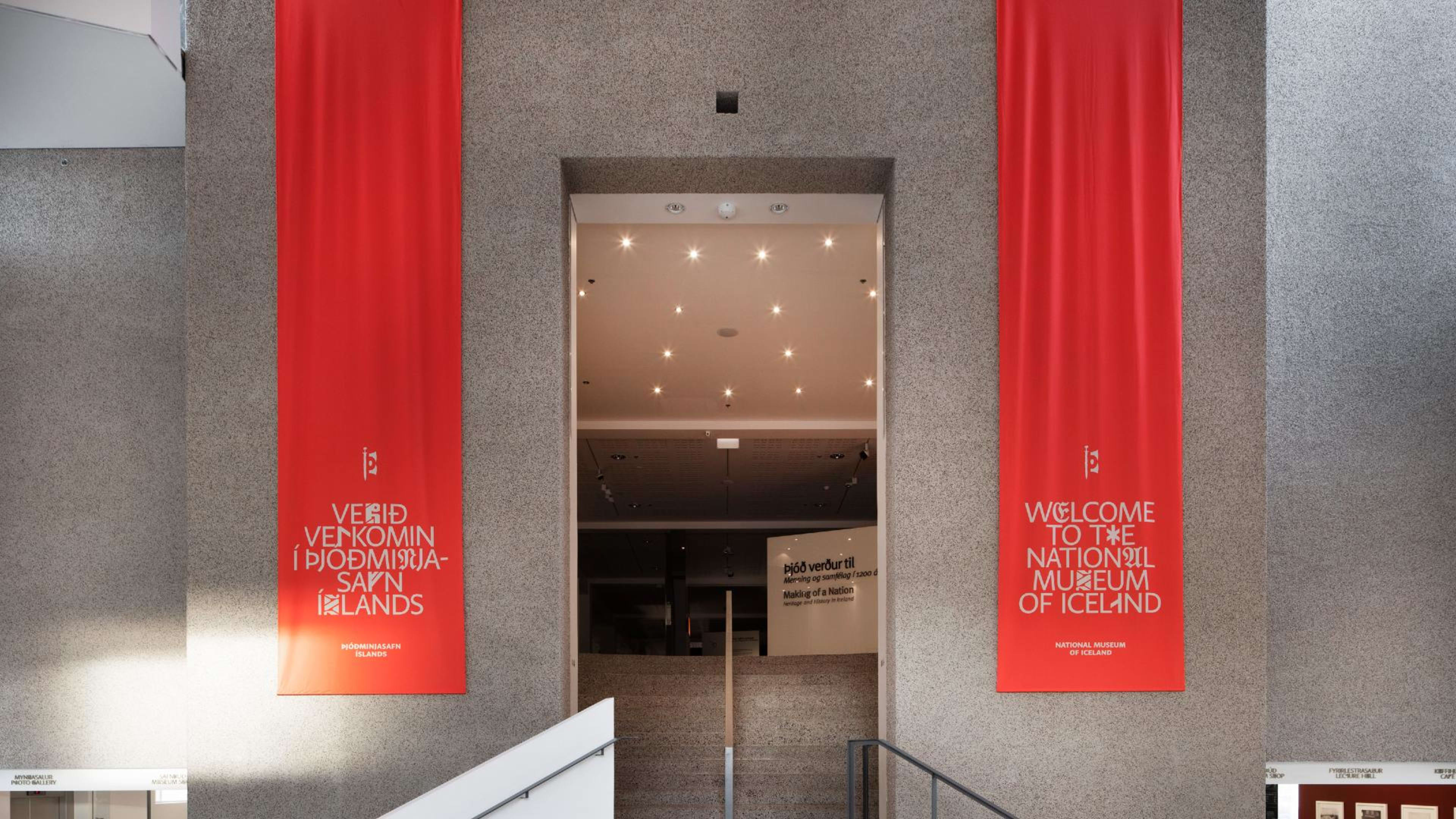
Location: Suðurgata 41, 102 Reykjavík
Opening hours: 10 a.m.–5 p.m. every day, closed Mondays Sep–Apr
The National Museum of Iceland offers a great overview of Icelandic history and culture in one place. The permanent exhibition, Making of a Nation, starts in the settlement era of the 8th century and spans right up to the present day.
Here you’ll also find a selection of rotating temporary exhibitions on Iceland’s culture and history. Past exhibitions have covered Icelandic art, fashion, music, and the sagas, as well as the local history of different regions like North Iceland.
- Read our Travel Guide to find out more about Icelandic people & culture.
The museum is also home to a café and a small gift shop. A great place to pick up an authentic Icelandic souvenir from your trip whilst supporting a local institution!
2. Árbær Open Air Museum

Location: Kistuhylur, 110 Reykjavík
Opening hours: 1 p.m.–5 p.m. Sep–May, 10 a.m.–5 p.m. Jun–Aug
Árbær Open Air Museum is built on the site of a former farm and opened as a museum in 1957. As you wander between its 20 historic buildings, you get a real sense of what life in a small Icelandic town must have been like in times past.
The buildings at the site have mostly been moved there from central Reykjavík. Iceland has a strong tradition of relocating its old timber-framed houses, which are often small enough to fit on the back of a truck in one piece.
- See traditional Icelandic buildings around the country on a self-drive tour.
This living history museum also hosts temporary exhibitions. Past ones have included toys, vintage cars, and Reykjavík in the 20th century.
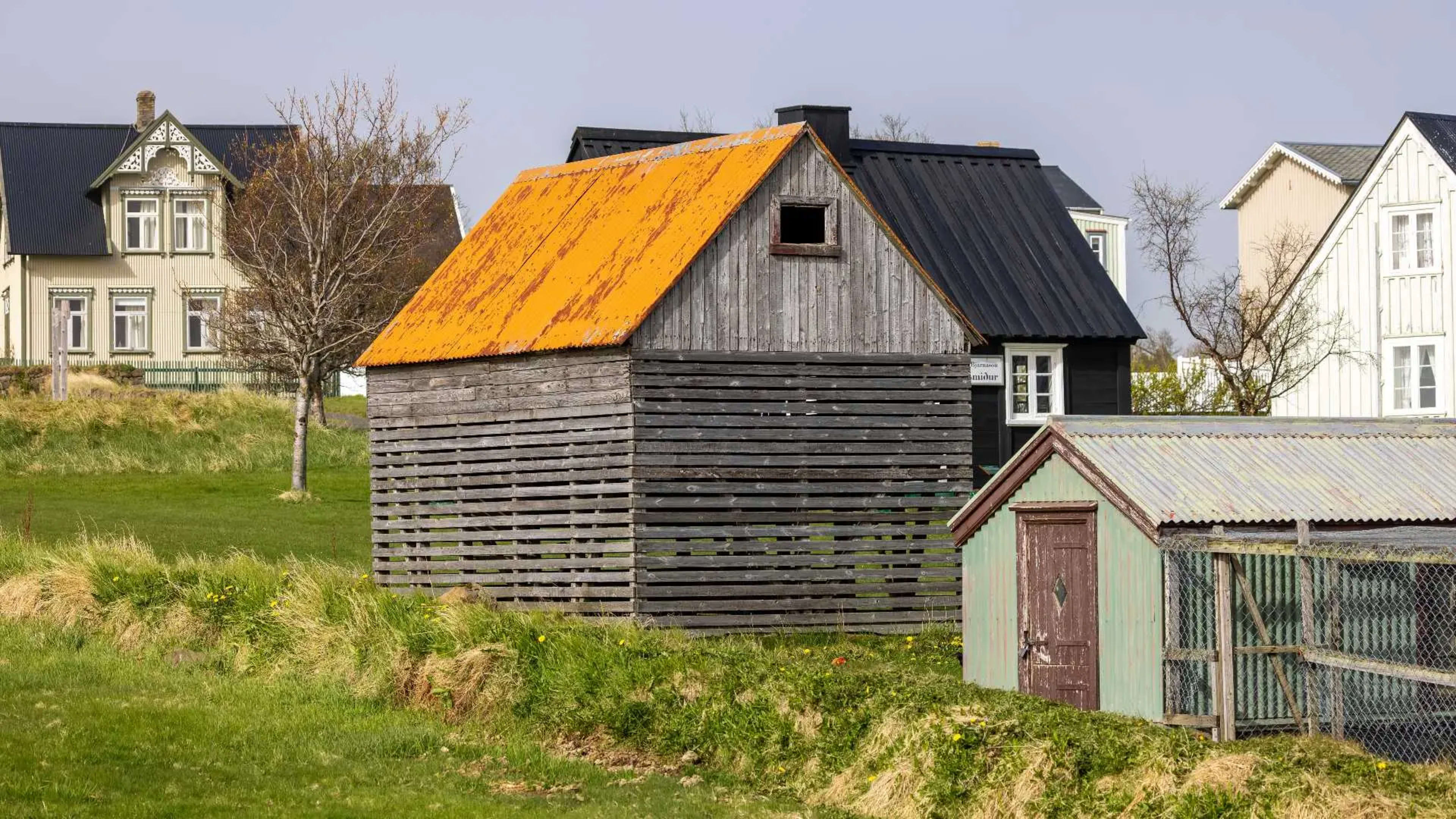
As this is mostly an outdoor museum, it’s a great place to go with kids. It’s not far from the Elliðaá river park, where you can go for a walk along the banks on a sunny day.
Good to know: Along with the Settlement Exhibition and Reykjavík Maritime Museum, Árbær Open Air Museum is part of Reykjavík City Museum. With the City Card, you can get access to all museums and galleries run by the city council, as well as the National Museum. What’s more, it gets you into the city pools!
3. Icelandic Phallological Museum
Location: Kalkofnsvegur 2, 101 Reykjavík
Opening hours: 10 a.m.–7 p.m. every day
Well, you probably have a lot of questions about this one. Where do we start? The Icelandic Phallological Museum boasts the questionable title of having the world’s largest collection of penises and penis-related art.

The museum itself was founded in the village of Húsavík in North Iceland by former Spanish teacher Sigurður Hjartarson. The museum grew with donations from Sigurður’s friends and family, including several whale penises and a bull pizzle (no, we don’t know either).
In 2012, he handed operations over to his son, who moved the museum south to Reykjavík and expanded its collection even further. Today it’s become a must-visit attraction for anyone passing through Iceland’s capital.
For avid penis fans, an annual pass is available. You’d have to be quite the admirer to beat the record of 43 visits in one year though!
4. Saga Museum

Location: Grandagarður 2, 101 Reykjavík
Opening hours: 10 a.m.–5 p.m. every day
At the Saga Museum, you can see moments from the famous Sagas of Icelanders brought to life. These ancient stories record the lives of real Icelanders, although normally with a big helping of fantasy and magic mixed in.
This museum focuses on the earlier eras of Icelandic history, starting at the point the landmass itself was formed 15 million years ago. It then fast-forwards to the first settlers, telling the stories of Norwegians who fled their homeland to start life in the new Icelandic colony.
Most of the Icelandic sagas are set in this period, although many weren’t written down until centuries later. So if you’re interested in learning more about the Viking culture of ancient Iceland, stop by the Saga Museum.
5. The Settlement Exhibition

Location: Aðalstræti 16, 101 Reykjavík
Opening hours: 10 a.m.–5 p.m. every day
If you walk along Aðalstræti from Ingólfstorg square, you’ll notice a murky glass window in the pavement. Look through it and you’ll get a glimpse of ancient Viking remains.
It’s these 9th-century remains that the Settlement Exhibition has been built around. They were unearthed during construction works in 2001 and are the oldest physical evidence of the settlement of Reykjavík. The remains are part of a longhouse, a type of building common in Viking times.
As well as the remains, the museum has interactive exhibits about life in Iceland during the settlement era. These are perfect for kids and big kids alike, so why not spend the afternoon here connecting with your inner Viking?
- Related: Top things to do in Reykjavík.
6. Reykjavík Maritime Museum
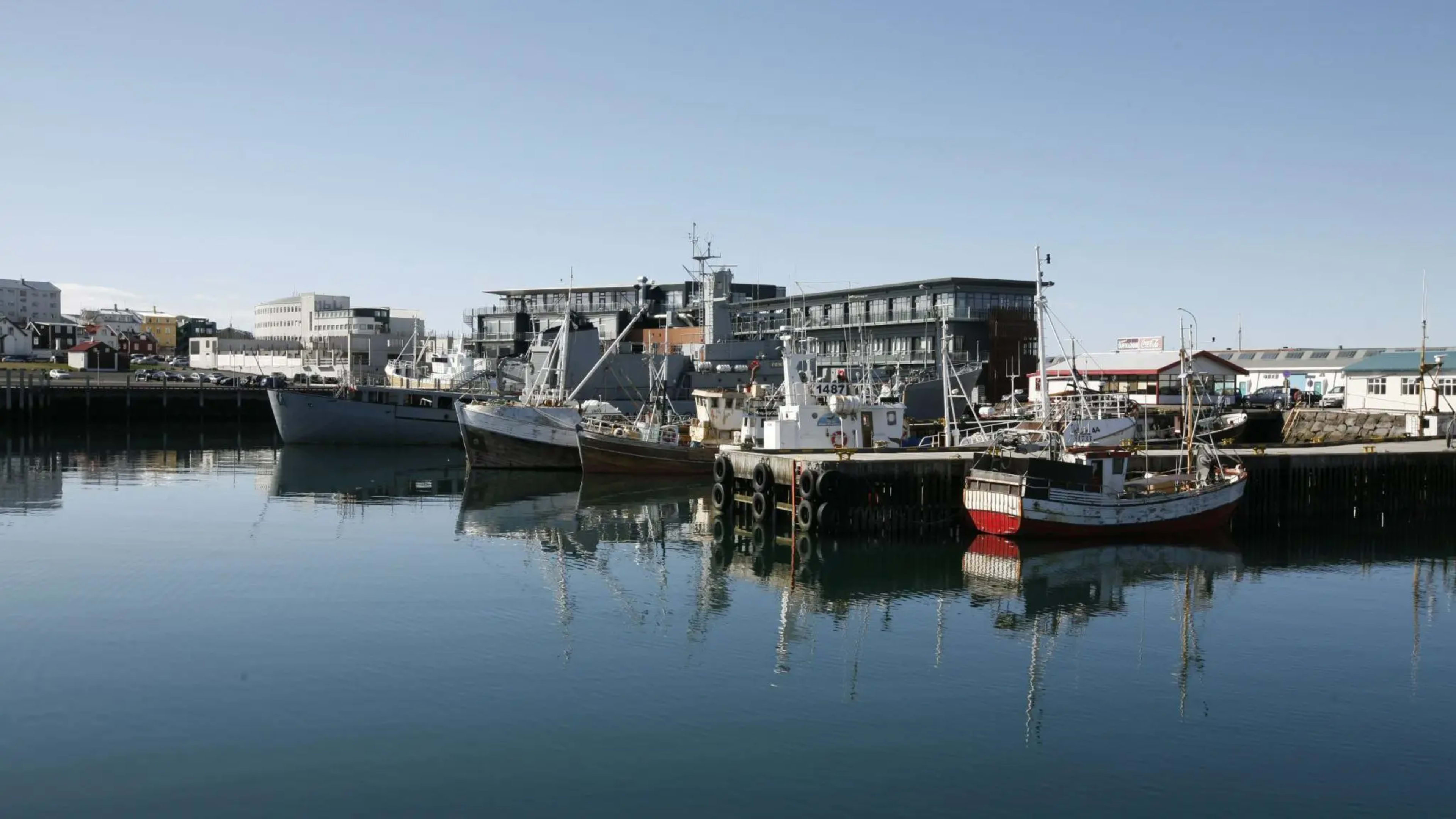
Location: Grandagarður 8, 101 Reykjavík
Opening hours: 10 a.m.–5 p.m. every day
As an island nation, Icelanders have developed a deep relationship with the sea. For centuries, fishing was the main industry and food source in Iceland. Even today, many remote villages around the country are dependent on fishing.
At the Reykjavík Maritime Museum, you can learn about the fishing history in Iceland from around 150 years ago. It was around then that large-scale fishing was first practiced. The museum also looks at the land-based industries that sprang up around the fisheries, such as boatmaking, sailmaking, and fish processing.
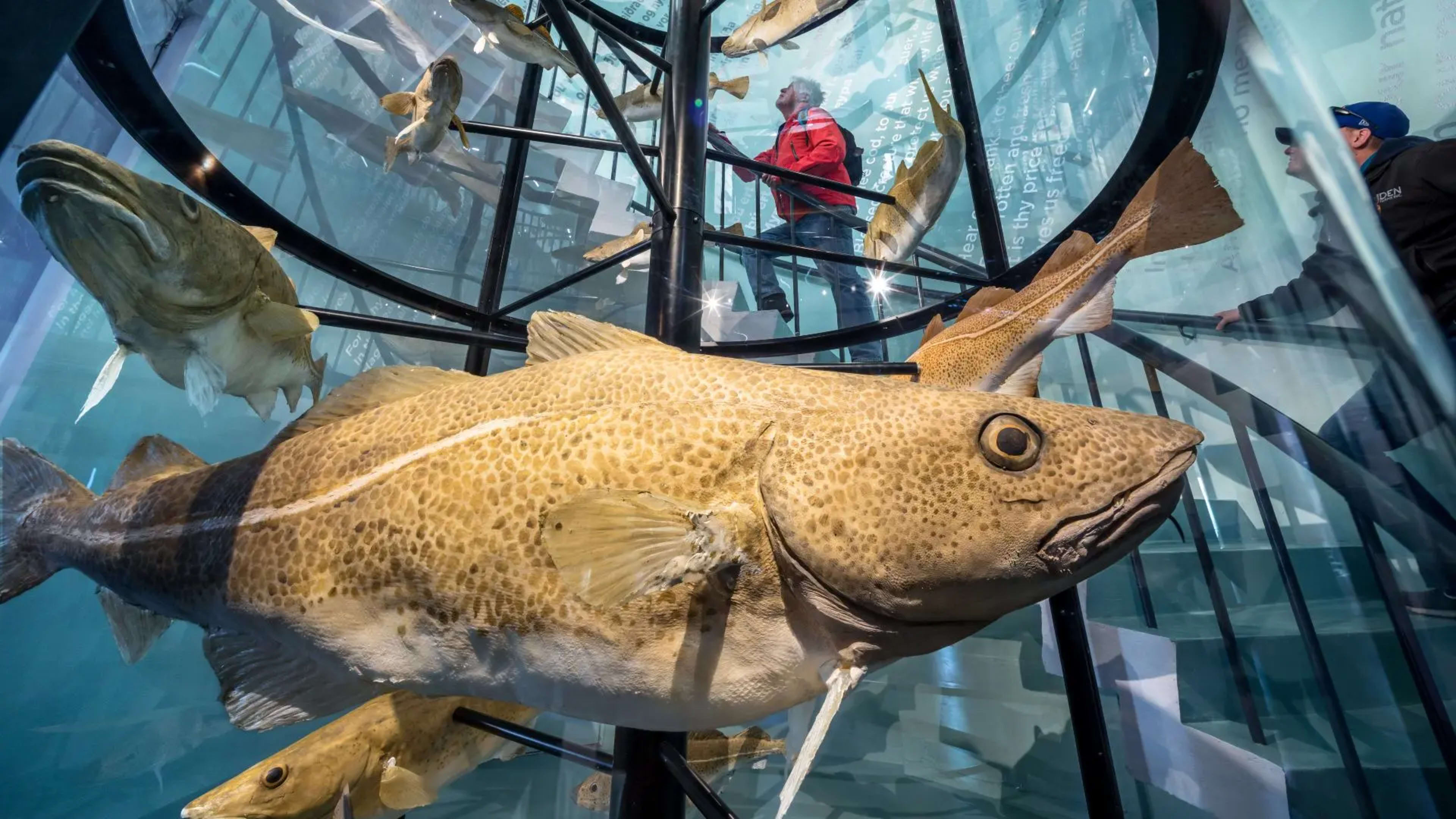
Fishing has always been a dangerous way to make a living, with men at sea for weeks or months at a time in often brutal conditions. Fishermen came up with different ways of keeping their spirits up and staying entertained, which you can also learn about here.
The museum is located in Grandi, the city’s former fishpacking district. After an afternoon looking around the exhibition, you can stop off at the nearby Grandi Mathöll for dinner. This trendy food hall is one of dozens of great places to eat in the district. So support local and order some Icelandic fish!
7. Safnahúsið
Location: Hverfisgata 15, 101 Reykjavík
Opening hours: 10 a.m.–5 p.m. every day, closed Mondays
Now run by the National Gallery of Iceland, Safnahúsið or the ‘House of Collections’ is one of the most beautiful buildings in Reykjavík. It was designed in 1906 by a Danish architect, originally to house Iceland’s national library.
Over the years the building has been home to a number of institutions. Until recently it was known as the Culture House, or Þjóðmenningarhúsið. Visit today and you’ll find all sorts of art-focused exhibitions put together by the National Gallery and National Museum.
Check the gallery’s website for the latest info on what’s on.
8. Reykjavík Art Museum
Location: Tryggvagata 17, 101 Reykjavík
Opening hours: 10 a.m.–5 p.m. every day, 10 a.m.–10 p.m. Thursdays
Reykjavík Art Museum is actually spread over 3 locations across the city, but its main gallery is on Tryggvagata in the heart of downtown. This gallery is housed in an old harbor warehouse, known as Hafnarhús, built in the modernist style.
Today it’s home to a permanent exhibition of works by Erró, one of Iceland’s most famous painters. Known for his pop art style, he has produced over 4,000 works and donated many of them to the museum.
Hafnarhús doubles as a music venue. It’s often used for the annual Iceland Airwaves festival as one of the main performance areas. So if you’re going to the festival, you might well drop in here by accident!
- Get the lowdown on festivals with our guide to events in Iceland.
9. Whales of Iceland
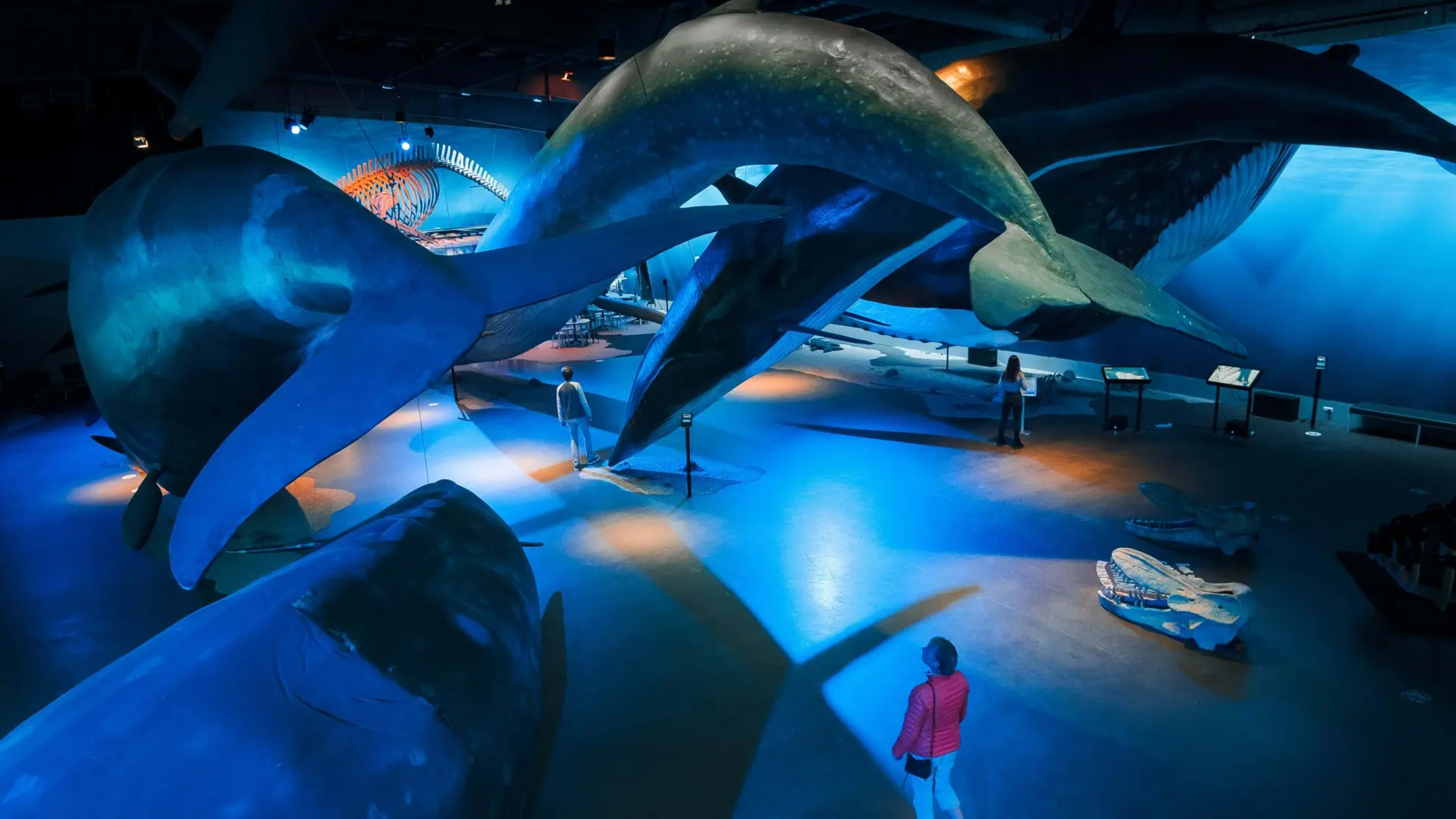
Location: Fiskislóð 23–25, 101 Reykjavík
Opening hours: 10 a.m.–5 p.m. every day
A stone’s throw from the Reykjavík Maritime Museum, Whales of Iceland focuses on the biggest species found in Icelandic waters. Here you can get up close and personal with lifesize replicas of the main whale species found around Iceland.
Whales of Iceland offers a number of ways to learn about these majestic creatures. As well as the touchable lifesize models, there are interactive exhibits and a VR experience that takes you underwater. All this makes the museum a great family-friendly option.
10. Aurora Reykjavík
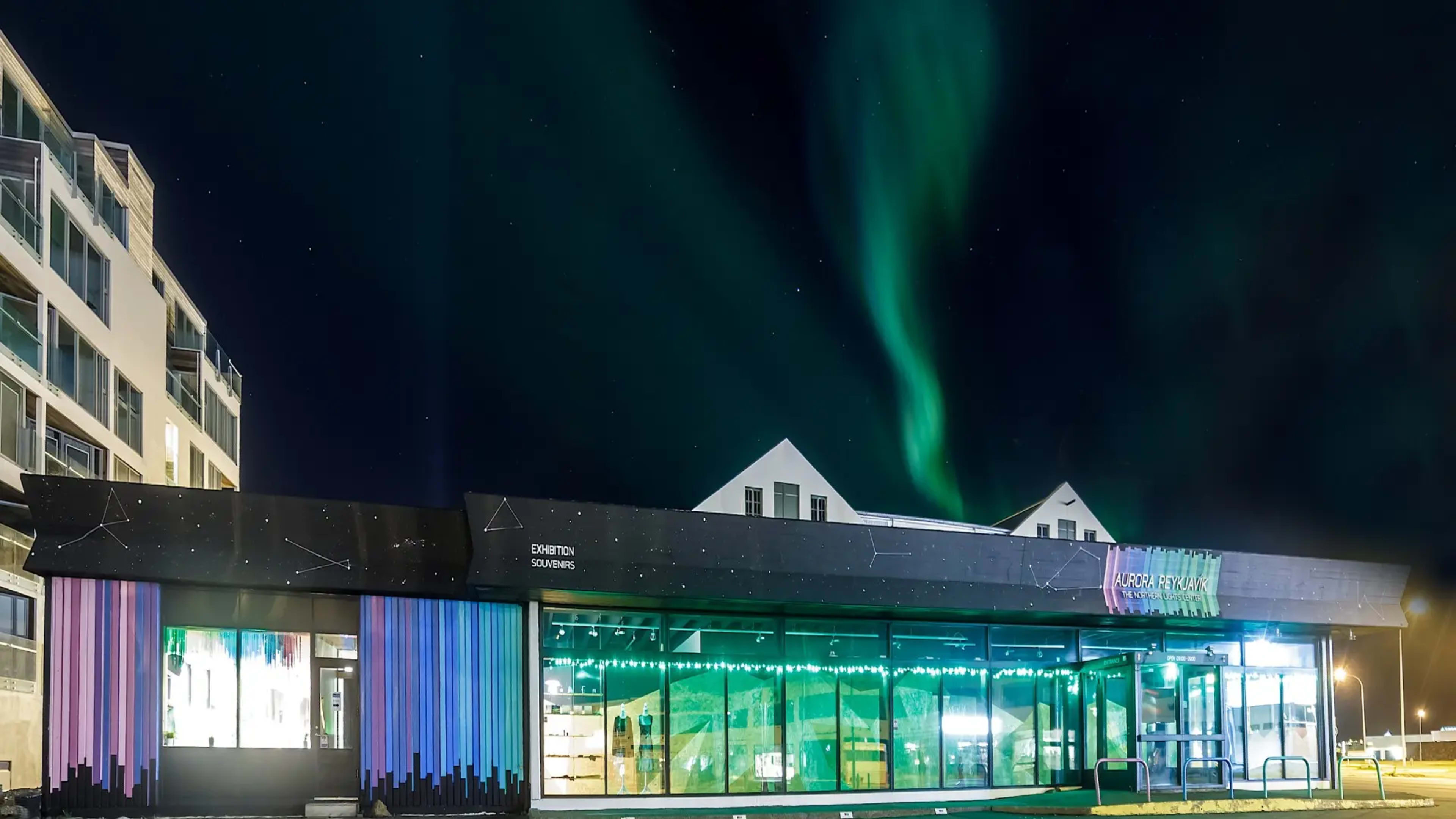
Location: Grandagarður 2, 101 Reykjavík
Opening hours: 9 a.m.–9 p.m. every day
The Northern Lights can sometimes be tricky to track down, even in perfect winter conditions. If you don’t manage to see them for yourself, you can stop by Aurora Reykjavík. Here you can watch an immersive video experience of the lights in the museum’s aurora theater.
You’ll also learn about the significance of the Northern Lights in Icelandic culture. As scientists didn’t properly understand what causes the aurora until the early 20th century, there are lots of myths around their origin and meaning.
If you’re planning to join a Northern Lights hunting tour, it might be worth a stop here beforehand for a photography class. You’ll get tips and tricks on how to take photos of these colorful ribbons as they dance across the sky!
Bonus: Perlan
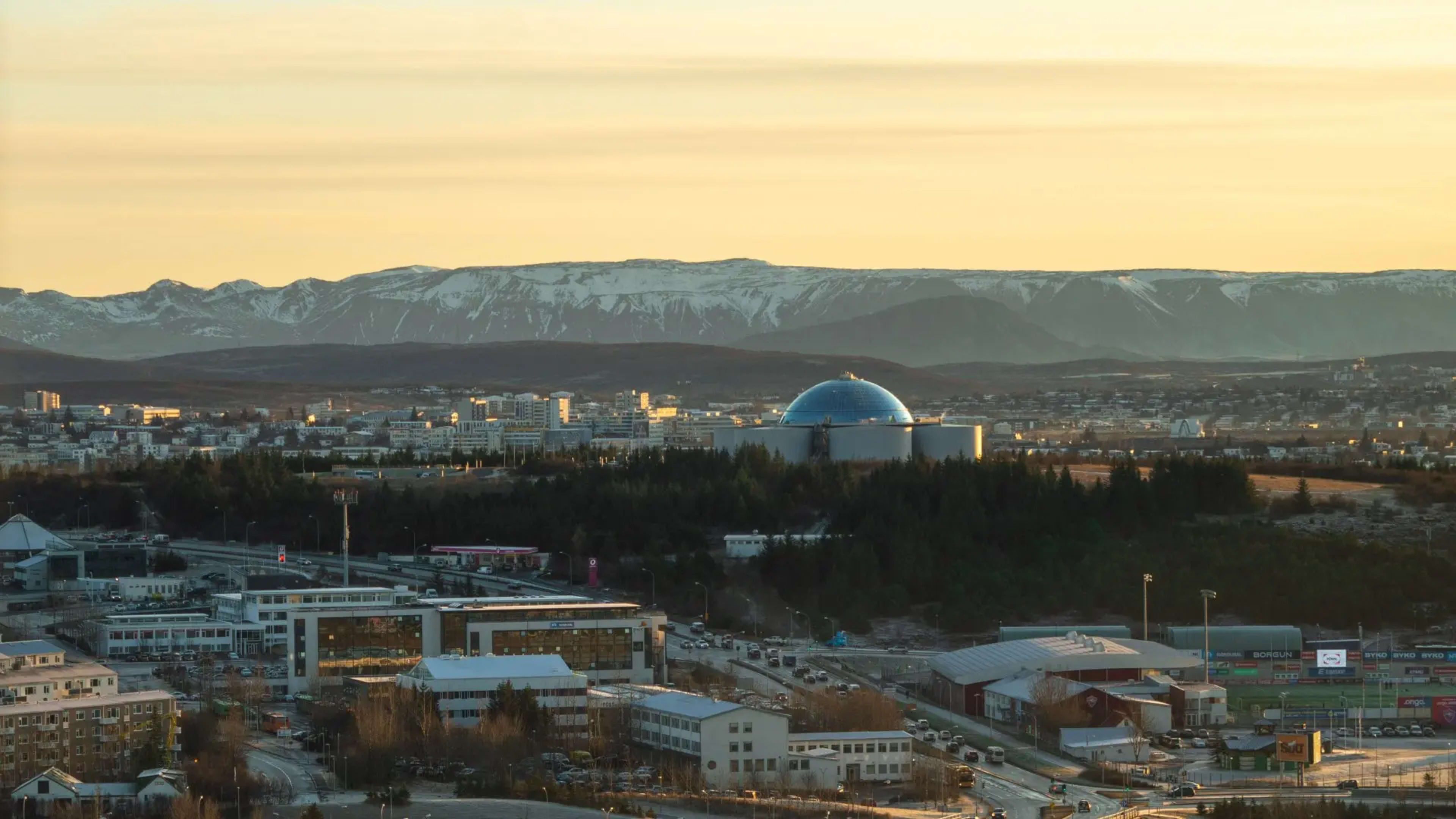
Location: Öskjuhlíð, 105 Reykjavík
Opening hours: Exhibitions open 9 a.m.–7 p.m.
Whilst Perlan isn’t technically a museum itself, it’s home to a few exhibitions that focus on Icelandic nature along with some other attractions.
- Check out our Travel Guide to learn more about Iceland’s nature & landscape.
You can see this huge domed building from many places all over Reykjavík. It’s worth visiting for the view from the observation deck alone. Here you get a full panorama over the city and a glimpse of the Esja mountain beyond.
There are currently 6 nature-themed exhibits at Perlan, including a journey through a reconstructed ice cave and a replica of the Látrabjarg bird cliff in the Westfjords. There’s also an exhibit on Icelandic nature, as well as video shows on the Northern Lights and seas of Iceland.
- See a real ice cave for yourself on an Iceland adventure tour.
- Blog: Your guide to ice caves and lava caves in Iceland.
Once you’ve checked out the exhibits you can grab a bite to eat at the café on the top floor. It’s here that you’ll also find Perlan’s newest attraction: a zipline! Probably best to eat after you fly down the zipline though.
How many museums are in Reykjavík?
We’ve listed just a handful of our favorite museums in Reykjavík, but Iceland’s capital is home to even more. You’ll also find museums in rural locations around the country, including along the south coast, in the Westman Islands, and in North Iceland.
- See more of the country on one of these Iceland vacation packages.
Are museums free in Reykjavík?
Most museums in Iceland charge a small admission fee to help support the museum’s work and preserve its collections. That said, some museums have free entry for kids!
Concessions are often available for students or elderly people, but check at the desk before you buy your ticket to be sure.
Are museums open on Sunday in Reykjavík?
Yes, most museums in Reykjavík are open on Sundays. It’s always worth checking the opening hours in case you are planning to visit on a public holiday though. Also, it’s good to know that some museums in Iceland are closed on Mondays.
Planning your visit to Reykjavík
Every trip to Iceland should include a day or two in Reykjavík. As well as museums, it has exciting places to eat mixed with cozy cafés and cool bars. And in the evenings you can go for walks along the beautiful coast or unwind in one of the heated city pools.
If you take a multi-day tour from Reykjavík, you’ll be based in the city and join different excursions into the countryside each day. This will give you plenty of time to explore everything the capital has to offer and get out into Icelandic nature.
And because multi-day tours are by bus, they’re also a lower-carbon way to travel around Iceland.
Now that you’re itching to experience the best of Reykjavík’s culture, you can start planning your trip. With Iceland Tours, you can choose your own departure date and secure your booking with just a 5% deposit. So what’s holding you back?

